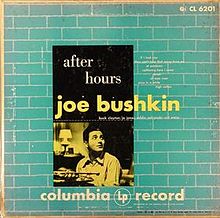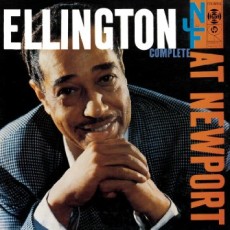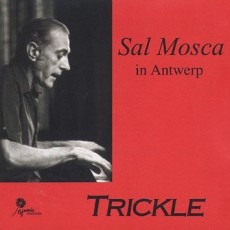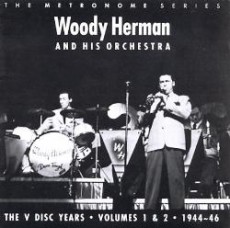
Daily Dose Of Jazz…
Sid Weiss was born April 30, 1914 in Schenectady, New York and learned clarinet, violin, and tuba when young. He switched to bass in his teens. He moved to New York City around 1931 and worked the following decade with Louis Prima, Bunny Berigan, Wingy Manone, Artie Shaw, Tommy Dorsey, Charlie Barnet and Adrian Rollini.
He was with Benny Goodman from 1941–1945, then played in the second half of the 1940s and the early 1950s with Muggsy Spanier, Pee Wee Russell, Cozy Cole, Bud Freeman, Duke Ellington and Eddie Condon. He quit full-time performing in the mid-1950s and in 1968 was an executive of the musicians’ union in Los Angeles, California. Bassist Sid Weiss passed away on March 30, 1994.
![]()
More Posts: bass

Daily Dose Of Jazz…
Duke Ellington was born Edward Kennedy Ellington on April 29, 1899 in Washington, D.C. to parents who were pianists with his mother primarily playing parlor songs and his father preferring operatic arias. At the age of seven, he began taking piano lessons from Marietta Clinkscales. Surrounded by dignified women who reinforced his manners and taught him to live elegantly, his childhood friends noticed that his casual, offhand manner, easy grace and dapper dress and began calling him “Duke”.
Though Ellington took piano lessons, he was more interested in baseball. Ellington went to Armstrong Technical High School in Washington, D.C. and his first job was selling peanuts at the Washington Senators baseball games. Sneaking into Frank Holiday’s Poolroom at the age of fourteen and hearing the poolroom pianists play ignited Duke’s love for the instrument, and he began to take his piano studies seriously. But in the summer of 1914, while working as a soda jerk at the Poodle Dog Cafe he wrote his first composition, Soda Fountain Rag, created by ear, as he had not yet learned to read and write music.
He took private lessons in harmony from Dunbar High School music teacher Henry Lee Grant and with guidance of pianist and bandleader Oliver “Doc” Perry, he learned to read sheet music, project a professional style, and improve his technique. He was equally inspired by his encounters with James P. Johnson, Lukey Roberts, Will Marion Cook, Fats Waller and Sidney Bechet.
Playing gigs in cafés and clubs around D.C. and working as a freelance sign-painter, in 1917 Ellington began assembling groups to play for dances beginning with The Duke Serenaders. His group ventured to Harlem joining Wilber Sweatman’s orchestra, becoming a part of the Renaissance. Striking out on their own they hit roadblocks and though Willie “The Lion” Smith introduced them to the scene and gave them some money, they ultimately returned to D.C. discouraged.
A 1923 gig in Atlantic City, New Jersey led to the prestigious Exclusive Club in Harlem, followed by the Hollywood Club and a four-year engagement, giving Ellington a solid artistic base. He would go on to lead The Washingtonians, record eight records, contribute four songs to the 1925 all-Black revue Chocolate Kiddies starring Lottie Gee and Adelaide Hall, and struck an agreement of 45% interest in his future with agent-publisher Irving Mills. He would record on nearly every label at the time giving him popular recognition.
In 1927 he began his engagement at the Cotton Club receiving national attention from weekly radio broadcasts from the club gave Ellington national exposure. He gained worldwide recognition with Adelaide Hall on Creole Love Call and Black and Tan composed by Bubber Miley. He would go on to play for Florenz Ziegfeld, compose music for film scores, hire Ivie Anderson and create hits It Don’t Mean A Thing If It Ain’t Got That Swing, Mood Indigo, Sophisticated Lady, Solitude and In A Sentimental Mood.
By the 1930s as the Depression worsened, Duke was still able to produce music and continue a high profile with his radio broadcasts. He had hits like Caravan and I Let a Song Go Out of My Heart. His short film Symphony In Black introduced Billie Holiday on A Rhapsody of Negro Life, winning an Academy Award for Best Musical Short Subject.
In 1939 he began his association with Billy Strayhorn and the stage turned up again with more great music collaborations, such as Take The “A” Train. Among the musicians in Duke’s orchestra at one time or another were Ben Webster, Cootie Williams, Ray Nance, Johnny Hodges, Jimmy Blanton, Herb Jeffries, Al Hibbler, Mary Lou Williams, Sonny Greer, Clark Terry, Louie Bellson, and many others to numerous to mention here.
Ellington’s appearance at the Newport Jazz Festival on July 7, 1956 returned him to wider prominence and introduced him to a new generation of fans with Paul Gonsalves’ 27-chorus marathon solo, culminating in an album release.
Over the next two decades Duke continued to tour, compose and record, have statues erected, schools , streets, parks, buildings and bridges named for him, and a coin and a stamp honoring him. He has an annual competition, The Essentially Ellington High School Jazz Competition and Festival at Jazz At Lincoln Center, has a star on the Hollywood Walk of Stars, was awarded a special Pulitzer Prize, received a Presidential Medal of Freedom, a Grammy Lifetime Achievement Award, Legion Of Honor from France, won 12 Grammy Awards, and has nine songs inducted into the Grammy Hall of Fame among too many to list.
Pianist, bandleader and composer Duke Ellington, who composed to the very last days of his life and never came off the road, passed away on May 24, 1974 of complications from lung cancer and pneumonia, a few weeks after his 75th birthday.
![]()
More Posts: piano

Daily Dose Of Jazz…
John Martin Tchicai was born on April 28, 1936 in Copenhagen, Denmark to a Danish mother and a Congolese father. The family moved to Aarhus where he studied violin in his youth, but in his mid-teens began playing clarinet and alto saxophone, focusing on the latter. By the late 1950s he was travelling around northern Europe, playing with many musicians.
A move to New York City in 1963, found Tchicai joining Archie Shepp’s New York Contemporary Five and the New York Art Quartet. He played on John Coltrane’s Ascension album and Albert Ayler’s New York Eye and Ear Control, both influential free jazz recordings. Following his work in New York, he returned to Denmark in 1966, and shortly thereafter focused most of his time on music education.
John formed the small orchestra Cadentia Nova Danica with Danish and other European musicians, collaborating with Musica Elletronica Viva and performed in multi-media events. He was a founding member of the Amsterdam’s Instant Composers Pool in 1968, and in 1969 took part in the recording of John Lennon’s Unfinished Music No. 2: Life with the Lions.
On August 30, 1975, his appearance at the Willisau Jazz Festival was recorded with Swiss pianist Irène Schweizer and released later that year as Willi The Pig. Tchicai returned to a regular gigging and recording schedule in the late 1970s. In the early 1980s he switched to the tenor saxophone as his primary instrument. In 1990 he was awarded a lifetime grant from the Danish Ministry of Culture.[3]
Tchicai relocated to Davis, California in 1991, where he led several ensembles. He was awarded a National Endowment for the Arts fellowship in 1997, was a member of Henry Kaiser and Wadada Leo Smith’s Yo Miles band, a loose aggregation of musicians exploring Miles Davis’ electric period.
In 2001 he returned to Europe to live near Perpignan in southern France. On June 11, 2012, free jazz alto and tenor saxophonist and composer John Tchicai suffered a brain hemorrhage in an airport in Barcelona, Spain. While recovering he passed away on October 8, 2012, aged 76.
![]()

Daily Dose Of Jazz…
Sal Mosca was born April 27, 1927 in Mount Vernon, New York and studied piano with Lennie Tristano. After playing in the United States Army Band during World War II, he studied at the New York College of Music under the G.I. Bill.
Mosca began working with Lee Konitz in 1949 and also worked with Warne Marsh. He spent much of his career teaching and was relatively inactive since 1992; however, new CDs were released in 2004, 2005, and 2008.
Pianist Sal Mosca, who predominately performed in the cool jazz and post-bop genres, passed away on July 28, 2007 in White Plains, New York.
![]()
More Posts: piano

Daily Dose Of Jazz…
Dave Tough, born April 26, 1907 in Oak Park, Illinois was sometimes Davie or Davey Tough. His decision to become a drummer was not supported by his family or community, so he ventured from his upper-middle class world to the evolving jazz scene of Chicago’s Southside, breaking both cultural and musical boundaries.
Dave worked Bud Freeman, Woody Herman, Eddie Condon, Red Nichols, Red Norvo, Tommy Dorsey, Bunny Berigan and Benny Goodman. Appearing as the poet-drummer character Dick Rough in the Autobiographical Novel of Kenneth Rexroth, he played at Chicago’s legendary Green Mask,
In the later 1920s, Tough floated between Nice and Paris doing freelance work, touring and recording throughout Europe mostly on the Tri-Ergon label in the early Thirties. During this overseas period he worked loosely with George Carhart and while in Paris he had extensive sessions with Mezz Mezzrow.
Though without official record,he spent portions of 1942-44 in the Navy playing behind Shaw’s Naval Band. He only led one album, a small-sided release by the Jamboree label. Although he had varied successes, one being with the Artie Shaw band, Dave also had difficulties with alcoholism and illness that caused him to lose a number of prominent jobs.
Although he was not known as a bebop drummer, he was a fan and admired the drumming of Max Roach. He was not a flashy, crowd-pleasing drummer like Gene Krupa or Buddy Rich, he was widely admired by other musicians for his taste and subtle rhythmic drive. Dixieland and swing drummer Dave Tough, described as the most important of the drummers of the Chicago circle in the 1930s and 1940s, passed away from a cerebral trauma after falling down on a Newark, New Jersey street on December 9, 1948 at age 41. He was inducted into the Big Band and Jazz Hall of Fame in 2000.
![]()
More Posts: drums


